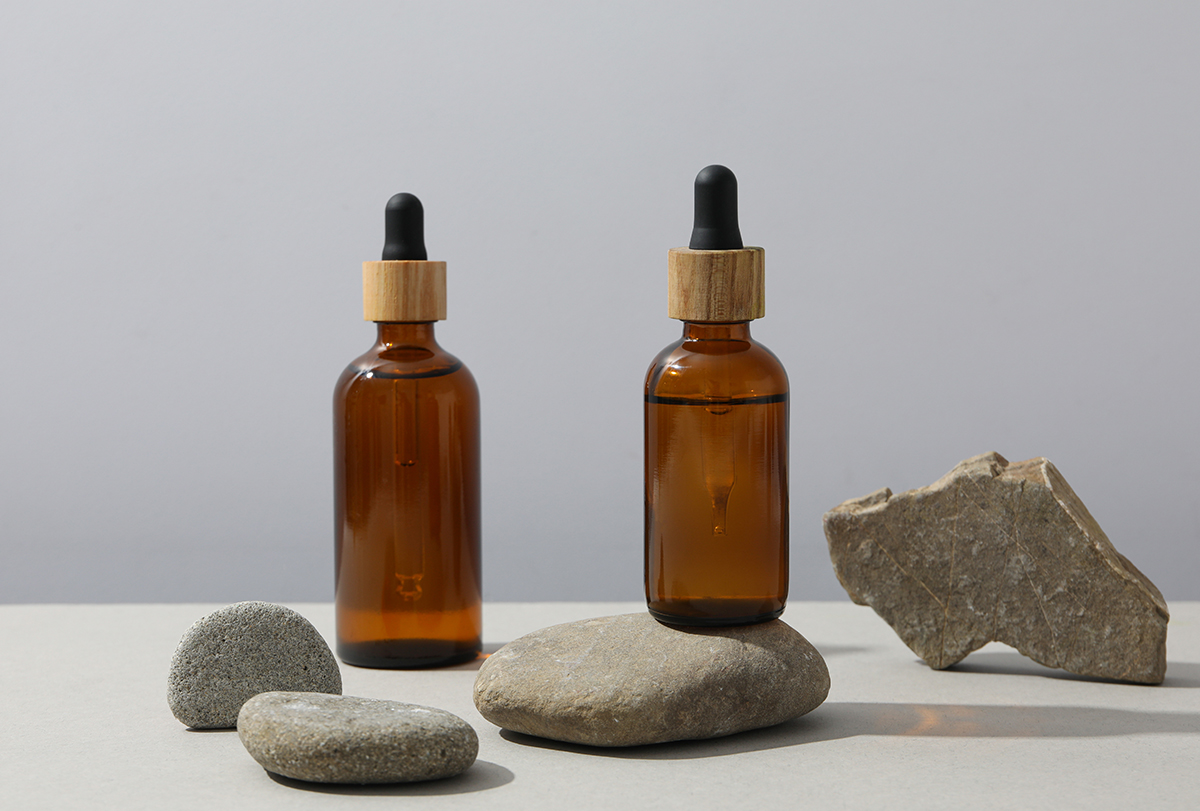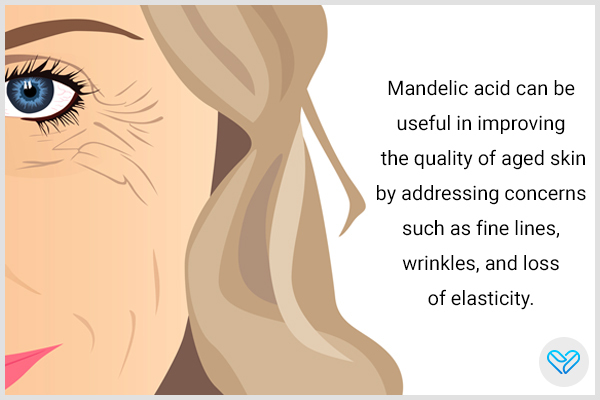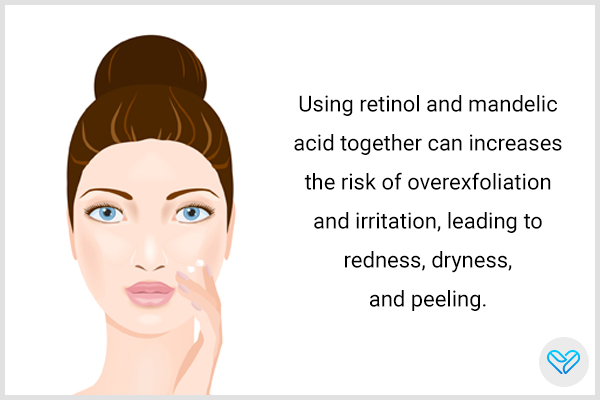In this article:
Mandelic acid and retinol are two widely recognized skin care ingredients that deliver unique advantages to the skin.

Mandelic acid, an alpha hydroxy acid (AHA), provides benefits to address various skin concerns such as acne, hyperpigmentation, and uneven skin tone. (1) On the other hand, retinol, a derivative of vitamin A, is renowned for its antiaging activity. (2)
Understanding the characteristics and uses of these ingredients can help individuals decide on the most practical choice for their skin care regimen.
Read on to find out how they differ from each other in different ways.
The Difference Between Mandelic Acid and Retinol
Here are the differences between mandelic acid and retinol.
| Aspect | Mandelic Acid | Retinol |
|---|---|---|
| Purpose | Controls acne and hyperpigmentation | Fights signs of aging |
| Skin aging | Improves skin surface and elasticity | Increases collagen, thereby decreasing wrinkles |
| Acne issues | Reduces lesions | Unclogs pores, reduces acne |
| Skin pigmentation | Helps with erythema or dyspigmentation | Helps with melasma and pigmentation |
| Exfoliation | Not a great exfoliant | A very good exfoliant |
| Side effects | Gentle on skin, very few side effects | Irritation, dryness, sensitivity |
Combating Skin Aging

For combating skin aging, retinol may be a better choice than mandelic acid. This is because retinoids have been extensively studied and proven effective in addressing skin aging, particularly photoaging caused by sun exposure.
They work by stimulating collagen production, improving skin surface, reducing fine lines and wrinkles, and promoting cell turnover. (2)
Mandelic acid, on the other hand, can also be somewhat useful in improving the quality of aged skin by addressing concerns such as fine lines, wrinkles, and loss of elasticity. (1) However, it is not as researched as retinol.
Managing Acne
Mandelic acid and retinol are both adequate for addressing skin acne.
Mandelic acid, with its antibacterial and anti-inflammatory activity, can help reduce acne lesions, including comedones, papules, and pustules. It also improves hydration and decreases seborrhea (excess oil production). (3)
On the other hand, retinol is known for its ability to regulate cell turnover, unclog pores, and reduce inflammation, resulting in improved acne symptoms. (4)
According to a study, a combination therapy involving benzoyl peroxide (BPO), retinol, mandelic acid, and glycyrrhetic acid is a rational approach to managing acne due to their respective antimicrobial, anti-inflammatory, keratolytic, and comedolytic effects. (4)(5)
However, it’s important to note that in the study, mandelic acid and retinol were engineered into one product and not used separately one after the other.
Addressing skin pigmentation
In addressing skin pigmentation, both topical mandelic acid and retinol offer effective solutions.
Mandelic acid, with its unique structure and solubility, penetrates the skin evenly and has demonstrated efficacy in treating superficial erythema and dyspigmentation. (6)
On the other hand, topical retinoids are valuable for managing various skin conditions associated with pigmented skin, such as melasma and post-inflammatory hyperpigmentation. (7)
Possible Side Effects of Using Mandelic Acid and Retinol
Retinol, being a potent form of vitamin A, can cause skin irritation, redness, dryness, and peeling, primarily when you first use it. (8) It can also boost skin sensitivity to sunlight, which is why sunscreen usage is crucial. (9)
Some individuals may experience a purging phase, where the skin temporarily worsens before improving.
Note: It is advisable to start with a mild concentration of retinol and slowly raise the frequency of use and potency to allow the skin to adjust.
Mandelic acid use is not often related to many side effects, deeming it safe for use. Nonetheless, some people may still encounter some adverse effects.
In summary, while retinol is known for its potential side effects, mandelic acid is generally gentler and well tolerated by people with sensitive skin.
Is It Safe to Use Retinol and Mandelic Acid Together?

Using retinol and mandelic acid together can potentially lead to excessive skin irritation and sensitivity. So, experts advise against it.
When used separately, retinol and mandelic acid can already be quite effective in their own right. Combining them increases the risk of overexfoliation and irritation, leading to redness, dryness, and peeling.
Most-Asked Questions
Is retinol more effective than mandelic acid?
Retinol and mandelic acid work differently, and their effectiveness depends on individual skin concerns, so it’s hard to compare them directly.
Can mandelic acid and retinol be used on alternate days?
Yes, alternating the use of mandelic acid and retinol can be a suitable approach to minimize potential irritation.
Can retinol be used during the day?
Retinol is best used at night because it can raise the skin’s sensitivity to sun rays.
Final Word
Incorporating mandelic acid and retinol into your skin care routine requires careful consideration of individual needs and skin sensitivity and consulting skin care professionals.
By understanding the characteristics of mandelic acid and retinol, you can make informed choices to achieve your desired skin goals.
- Was this article helpful?
- YES, THANKS!NOT REALLY


